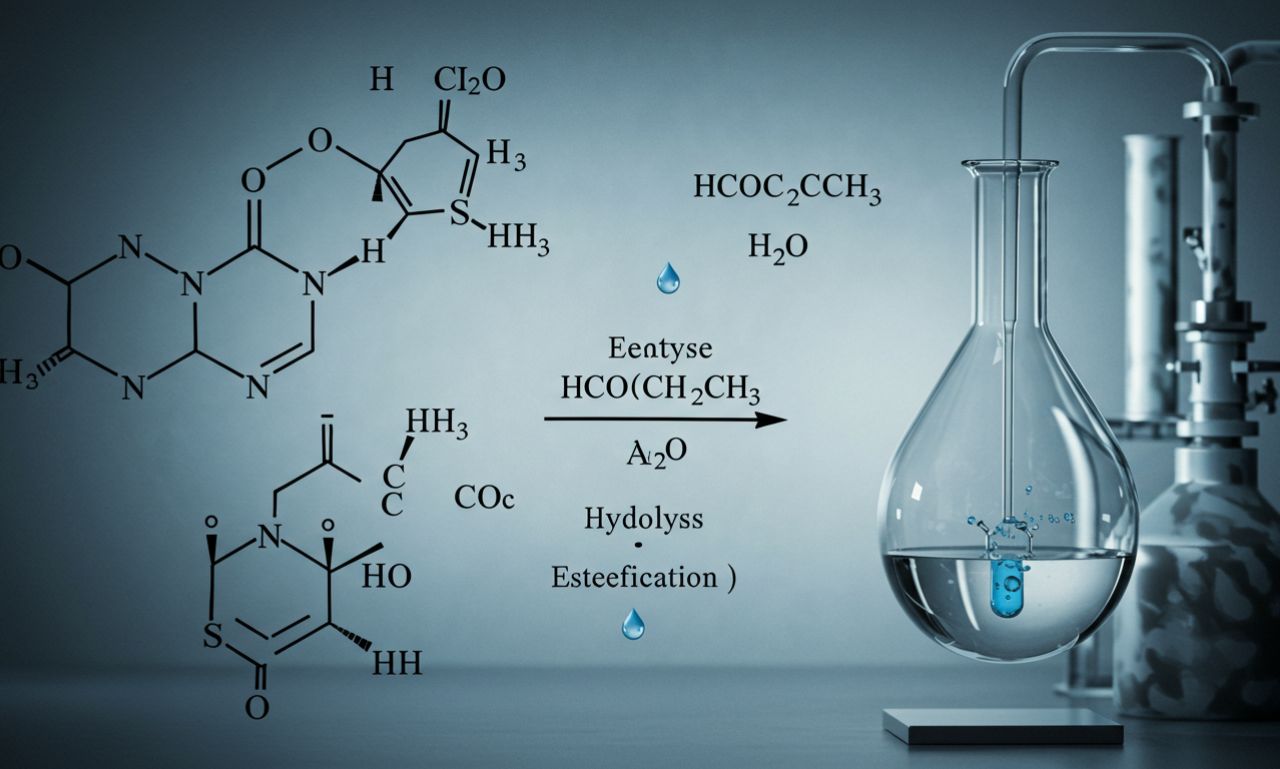HCOOCH CH2 H2O Meaning and Structure
The compound hcooch ch2 h2o represents a hydrated form of a chemical species often described in organic chemistry discussions. Breaking it down:
-
HCOOCH typically relates to a formyl or ester fragment.
-
CH2 signifies a methylene group.
-
H2O indicates hydration—presence of water molecules either as part of the crystal lattice or bound chemically.
Chemists often denote such formulas to describe intermediates in reactions, hydrated salts, or experimental compounds under study. While shorthand may look unconventional, hcooch h2o reflects real-world practices of writing simplified chemical notes during experimental recording.
HCOOCH CH2 H2O in Organic Chemistry
In organic chemistry, hcooch ch2 h2o may appear in contexts involving:
-
Hydrated esters – intermediates during esterification or hydrolysis.
-
Carbonyl chemistry – where HCO fragments contribute to aldehyde or formate reactions.
-
Reaction notation – where hydration states are included to show stability or catalytic conditions.
Such notation helps chemists track reaction pathways, particularly in teaching labs or industrial design.
Molecular Properties
The properties of hcooch ch2 depend on its exact structural arrangement. Broadly, one can anticipate:
-
Polar nature due to oxygen atoms and water.
-
Hydrogen bonding opportunities from H2O molecules.
-
Moderate solubility in polar solvents like ethanol or methanol.
-
Thermal sensitivity if hydration is lost upon heating.
These characteristics affect its stability, storage, and usability.
HCOOCH CH2 H2O and Esterification
The ester group (HCOOCH) is central in organic synthesis. Esters form when acids react with alcohols, and hydration may occur during equilibrium. In laboratories, hcooch h2o could symbolize an ester intermediate bound with water, reminding chemists of equilibrium challenges.
Industrial Relevance of HCOOCH CH2 H2O
Industrially, hydrated intermediates like hcooch h2o matter because:
-
They influence yield calculations in large-scale reactions.
-
Hydration affects catalyst efficiency in esterification or hydrolysis.
-
In pharmaceuticals, hydration states impact drug formulation stability.
Thus, accurate recording of hydration is critical in patents, production, and quality control.
Reactions Involving HCOOCH CH2 H2O
Reactions potentially involving hcooch ch2 h2o include:
-
Hydrolysis – breaking esters back into acids and alcohols with water.
-
Condensation – forming larger molecules while releasing water.
-
Oxidation-reduction – depending on the aldehyde/formate content.
Chemists studying such compounds explore kinetics, equilibrium constants, and catalysts.
Analytical Methods
To study hcooch ch2 , scientists use:
-
Infrared (IR) Spectroscopy – to identify carbonyl and hydroxyl stretches.
-
Nuclear Magnetic Resonance (NMR) – to confirm molecular environments.
-
Mass Spectrometry (MS) – to determine molecular weight and hydration.
-
X-ray Crystallography – for structural confirmation of hydration states.
These tools ensure precise identification and reproducibility in research.
HCOOCH CH2 H2O in Environmental Chemistry
Hydrated organic fragments like hcooch ch2 h2o may play roles in:
-
Atmospheric chemistry – hydration of volatile organic compounds (VOCs).
-
Biodegradation pathways – natural processes break down hydrated esters.
-
Water treatment chemistry – where organics interact with water molecules.
Understanding such compounds aids in modeling pollutant behavior.
Safety Considerations with HCOOCH CH2 H2O
When handling compounds such as hcooch h2o, one should consider:
-
Flammability risks from organic ester groups.
-
Skin and eye irritation potential.
-
Storage sensitivity if hydration is lost under heat or dry air.
-
Safe disposal according to organic waste protocols.
Proper lab training ensures safe use and environmental responsibility.
Educational Use of HCOOCH CH2 H2O
Chemistry instructors sometimes use it as a notation example when teaching:
-
Hydration states in formulas.
-
Reaction equilibrium in esterification.
-
Importance of notation clarity.
It highlights how small changes in chemical representation carry big implications.
Research and Development
Scientists exploring green chemistry and biodegradable materials investigate hydrated organics for sustainable synthesis. By modeling hydration effects, researchers can design catalysts and solvents that reduce waste and energy use.
The Future of Studies
Looking ahead,It’s research may expand in:
-
Renewable chemistry – using bio-derived feedstocks.
-
Pharmaceutical hydration – stabilizing drugs.
-
Catalysis innovations – designing water-tolerant catalysts.
-
Nanomaterials – embedding hydrated groups for smart responses.
These directions make the study of such compounds relevant for modern science.
Conclusion
The formula hcooch ch2 , while compact, encapsulates essential themes in chemistry: hydration states, esterification, industrial yield, and safety. Its study bridges education, research, and industry. Whether viewed as a teaching aid, a real compound, or a symbol of hydration in organic chemistry, hcooch ch2 showcases the intricate dance between molecules and water—at the core of both chemistry and life.
